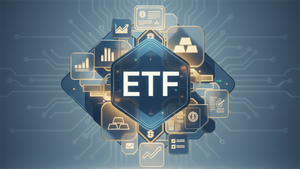
Taiwan Semiconductor Manufacturing Company (NYSE: TSM) (TSMC), the undisputed leader in advanced chip manufacturing, is implementing significant pricing adjustments for its cutting-edge semiconductor processes, a strategic move set to redefine the economics of the tech industry from late 2024 into early 2025 and beyond. These increases, primarily affecting the most advanced nodes crucial for artificial intelligence (AI) and high-performance computing (HPC), are driven by soaring production costs, monumental investments in next-generation technologies and global manufacturing facilities, and the insatiable demand for the chips powering the AI revolution.
This shift marks a pivotal moment in semiconductor history, signaling the potential end of an era characterized by predictably declining costs per transistor. For decades, Moore's Law underpinned technological progress by promising exponential power increases alongside decreasing costs. However, the immense capital expenditures and the extreme complexities of manufacturing at the angstrom scale mean that for the first time in a major node transition, the cost per transistor is expected to rise, fundamentally altering how companies approach innovation and product development.
The Escalating Cost of Cutting-Edge Chips: A Technical Deep Dive
TSMC's pricing adjustments reflect the exponentially increasing complexity and associated costs of advanced manufacturing technologies, particularly Extreme Ultraviolet (EUV) lithography. The company is projected to raise prices for its advanced manufacturing processes by an average of 5-10% starting in 2026, with some reports suggesting annual increases ranging from 3% to 5% for general advanced nodes and up to 10% for AI-related chips. This follows earlier anticipated hikes of up to 10% in 2025 for some advanced nodes.
The most substantial adjustment is projected for the upcoming 2nm node (N2), slated for high-volume production in late 2025. Initial estimates suggest 2nm wafers will cost at least 50% more than 3nm wafers, potentially exceeding $30,000 per wafer. This is a significant jump from the current 3nm wafer cost, which is in the range of $20,000 to $25,000. For 4nm and 5nm nodes (N4/N5), particularly those used for AI and HPC customers like Advanced Micro Devices (NASDAQ: AMD), NVIDIA Corporation (NASDAQ: NVDA), and Intel Corporation (NASDAQ: INTC), price hikes of up to 10% in 2025 are anticipated. Beyond wafer fabrication, advanced chip-on-wafer-on-substrate (CoWoS) packaging, critical for high-bandwidth memory in AI accelerators, is expected to see price increases of up to 20% over the next two years.
These increases are directly tied to the astronomical costs of developing and deploying advanced nodes. Each ASML (NASDAQ: ASML) EUV machine, essential for these processes, costs around $350 million, with newer High-NA EUV machines priced even higher. Building a cutting-edge semiconductor fabrication plant capable of 3nm production costs between $15 billion and $20 billion. Furthermore, manufacturing costs at TSMC's new Arizona plant are reportedly 15-30% higher than in Taiwan, contributing to a projected dilution of gross margins by 2-4% from 2025 onward. This multi-year, consecutive price hike strategy for advanced nodes represents a significant departure from TSMC's traditional approach, which historically maintained greater pricing stability. Industry experts describe this as a "structural correction" driven by higher capital, labor, and material costs, rather than purely an opportunistic move.
Seismic Shifts: Impact on AI Companies, Tech Giants, and Startups
TSMC's pricing adjustments will profoundly reshape the competitive landscape for AI companies, tech giants, and startups. Major clients, heavily reliant on TSMC's advanced nodes, will face increased manufacturing costs, ultimately impacting product pricing and strategic decisions.
NVIDIA (NASDAQ: NVDA), a cornerstone client for its cutting-edge GPUs essential for AI and data centers, will face significant cost increases for advanced nodes and CoWoS packaging. While NVIDIA's dominant position in the booming AI market suggests it can likely pass some of these increased costs onto its customers, the financial burden will be substantial. Apple Inc. (NASDAQ: AAPL), expected to be among the first to adopt TSMC's 2nm process for its next-generation A-series and M-series chips, will likely see higher manufacturing costs translate into increased prices for its premium consumer products. Similarly, Advanced Micro Devices (NASDAQ: AMD), whose Zen and Instinct series processors are critical for HPC and AI, will also be impacted by higher wafer and packaging costs, competing with NVIDIA for limited advanced node capacity. Qualcomm Incorporated (NASDAQ: QCOM), transitioning its flagship mobile processors to 3nm and 2nm, will face elevated production costs, likely leading to price adjustments for high-end Android smartphones. For startups and smaller AI labs, the escalating costs of advanced AI chips and infrastructure will raise the barrier to entry, potentially stifling emergent innovation and leading to market consolidation among larger, well-funded players.
Conversely, TSMC's pricing strategy could create opportunities for competitors. While Intel Corporation (NASDAQ: INTC) continues to rely on TSMC for specific chiplets, its aggressive ramp-up of its own foundry services (Intel Foundry) and advanced nodes (e.g., 18A, comparable to TSMC's 2nm) could make it a more attractive alternative for some chip designers seeking competitive pricing or supply diversification. Samsung Electronics Co., Ltd. (KRX: 005930), another major foundry, is also aggressively pursuing advanced nodes, including 2nm Gate-All-Around (GAA) products, and has reportedly offered 2nm wafers at a lower price than TSMC to gain market share. Despite these competitive pressures, TSMC's unmatched technological leadership, superior yield rates, and approximately 70-71% market share in the global pure-play wafer foundry market ensure its formidable market positioning and strategic advantages remain largely unassailable in the near to mid-term.
The Broader Tapestry: Wider Significance and Geopolitical Implications
TSMC's pricing adjustments signify a profound structural shift in the broader AI and tech landscape. The "end of cheap transistors" means that access to the pinnacle of semiconductor technology is now a premium service, not a commodity. This directly impacts AI innovation, as the higher cost of advanced chips translates to increased expenditures for developing and deploying AI systems, from sophisticated large language models to autonomous systems. While it could slow the pace of AI innovation for smaller entities, it also reinforces the advantage of established giants who can absorb these costs.
The ripple effects will be felt across the digital economy, leading to costlier consumer electronics as chip costs are passed on to consumers. This development also has significant implications for national technology strategies. Geopolitical tensions, particularly the "chip war" between the U.S. and China, are driving nations to seek greater technological sovereignty. TSMC's investments in overseas facilities, such as the multi-billion-dollar fabs in Arizona, are partly influenced by national security concerns and a desire to reduce reliance on foreign suppliers. However, this diversification comes at a significant cost, as chips produced in TSMC's Arizona fabs are estimated to be 5-20% more expensive than those made in Taiwan.
Concerns also arise regarding increased barriers to entry and market concentration. TSMC's near-monopoly in advanced manufacturing (projected to reach 75% of the global foundry market by 2026) grants it substantial pricing power and creates a critical reliance for the global tech industry. Any disruption to TSMC's operations could have far-reaching impacts. While TSMC is diversifying its manufacturing footprint, the extreme concentration of advanced manufacturing in Taiwan still introduces geopolitical risks, indirectly affecting the stability and affordability of the global tech supply chain. This current situation, driven by the extraordinary financial and technical challenges of pushing to the physical limits of miniaturization, strategic geopolitical costs, and unprecedented AI demand, makes these pricing adjustments a structural shift rather than a cyclical fluctuation.
The Road Ahead: Future Developments and Expert Predictions
Looking ahead, TSMC is poised for continued technological advancement and strategic growth, predominantly fueled by the AI supercycle. In the near term (late 2025-2026), TSMC's N2 (2nm-class) process, utilizing Gate-All-Around (GAA) nanosheet transistors, is on track for volume production in the second half of 2025. This will be followed by the N2P and A16 (1.6nm-class) nodes in late 2026, with A16 introducing Super Power Rail (SPR) technology for backside power delivery, particularly beneficial for data center AI and HPC applications. TSMC is also aggressively expanding its advanced packaging capacity, with CoWoS capacity growing at an over 80% compound annual growth rate (CAGR) from 2022 to 2026 and fully booked until 2025.
Longer-term (beyond 2026), the A14 (1.4nm-class) process is targeted for volume production in 2028, with construction of its fab beginning ahead of schedule in October 2025. By 2027, TSMC plans to introduce System on Wafer-X (SoW-X), a wafer-scale integration technology combined with CoWoS, aiming for a staggering 40 times the current computing power for HPC applications. These advancements are predominantly driven by and tailored for the exponential growth of AI, enabling next-generation AI accelerators, smarter smartphones, autonomous vehicles, and advanced IoT devices.
However, significant challenges remain. The rising production costs, particularly at overseas fabs, and the complexities of global expansion pose persistent financial and operational hurdles. Geopolitical tensions, intense competition from Samsung and Intel, and global talent shortages further complicate the landscape. Experts generally maintain a bullish outlook for TSMC, anticipating strong revenue growth, persistent market share dominance in advanced nodes (projected to exceed 90% in 2025), and continued innovation. The global shortage of AI chips is expected to continue through 2025 and potentially ease into 2026, indicating sustained high demand for TSMC's advanced capacity.
A Comprehensive Wrap-Up: The New Paradigm of Chipmaking
TSMC's pricing adjustments represent more than just a financial decision; they signify a fundamental shift in the economics and geopolitics of advanced semiconductor manufacturing. The key takeaway is the undeniable rise in the cost of cutting-edge chips, driven by the extreme technical challenges of scaling, the strategic imperative of global diversification, and the explosive demand from the AI era. This effectively ends the long-held expectation of perpetually declining transistor costs, ushering in a new paradigm where access to the most advanced silicon comes at a premium.
This development's significance in the context of AI history cannot be overstated. As AI becomes increasingly sophisticated, its reliance on specialized, high-performance, and energy-efficient chips grows exponentially. TSMC, as the indispensable foundry for major AI players, is not just manufacturing chips; it is setting the pace for the entire digital economy. The AI supercycle is fundamentally reorienting the industry, making advanced semiconductors the bedrock upon which all future AI capabilities will be built.
The long-term impact on the tech industry and global economy will be multifaceted: higher costs for end-users, potential profit margin pressures for downstream companies, and an intensified push for supply chain diversification. The shift from a cost-driven, globally optimized supply chain to a geopolitically influenced, regionally diversified model is a permanent change. As of late 2024 to early 2025, observers should closely watch the ramp-up of TSMC's 2nm production, the operational efficiency of its overseas fabs, and the reactions of major clients and competitors. Any significant breakthroughs or competitive pricing from Samsung or Intel could influence TSMC's future adjustments, while broader geopolitical and economic conditions will continue to shape the trajectory of this vital industry. The interconnected factors will determine the future of the semiconductor industry and its profound influence on the global technological and economic landscape in the coming years.
This content is intended for informational purposes only and represents analysis of current AI developments.
TokenRing AI delivers enterprise-grade solutions for multi-agent AI workflow orchestration, AI-powered development tools, and seamless remote collaboration platforms.
For more information, visit https://www.tokenring.ai/.






